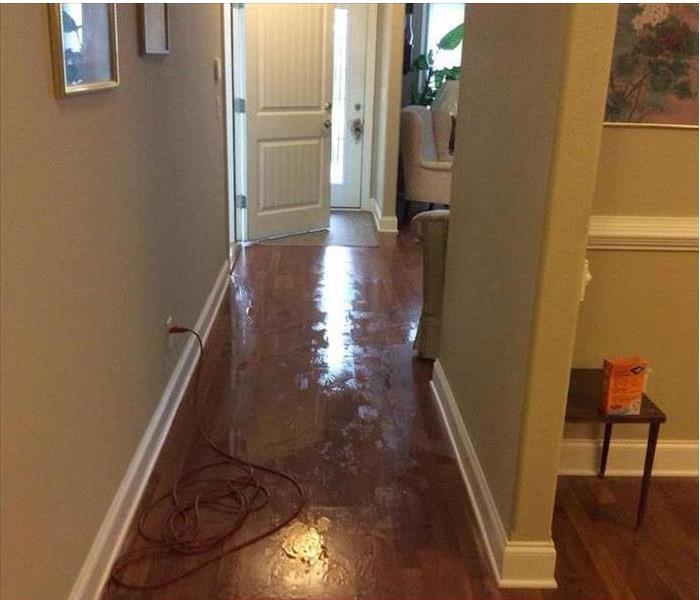3 Types of Building Materials Affected by Flood Waters
9/27/2021 (Permalink)
Flood Waters Affect Three Types of Building Materials
When flooding occurs at your Charleston, TN, home, not all the damage may be immediately apparent. In fact, swelling wood, damaged drywall and other problems might not be visible until the flood waters are removed by a professional storm cleanup and restoration company. Once you take stock of the damage, knowing how the building materials in your home can be affected by flood waters may help you take the firsts steps in having the damage repaired.
1. Wood
Wooden furniture and hardwood floors can sustain serious damage from almost any type of flooding event. Because wood is a porous material, it can absorb water and cause warping. Molding and wainscoting may crack due to swelling wood and might need replacing. Treated wood furniture may not absorb as much water and may be salvageable.
2. Insulation
Your home's insulation can suffer serious damage during a flood, especially if a water supply line breaks directly next to an interior wall that contains it. Even if the wall itself does not appear damaged, wet insulation can cause mold growth and foul odors that may eventually seep out into your home. Restoration experts can perform a flood cut, which removes part of the wall to expose the insulation so it can be inspected and removed.
3. Drywall
Any affected drywall near the source of the flood may be salvageable if you act quickly. Having sections removed and properly dried may allow you to put it back once the area is checked for mold. Drywall that must be removed for water pipe repair should be moved into a room with low humidity so water evaporation does not damage it.
Your Charleston, TN, home can be affected by flooding in many ways. However, when you understand how water can affect its building materials, you can act quickly to prevent swelling wood, insulation rot and other water damage.






 24/7 Emergency Service
24/7 Emergency Service
